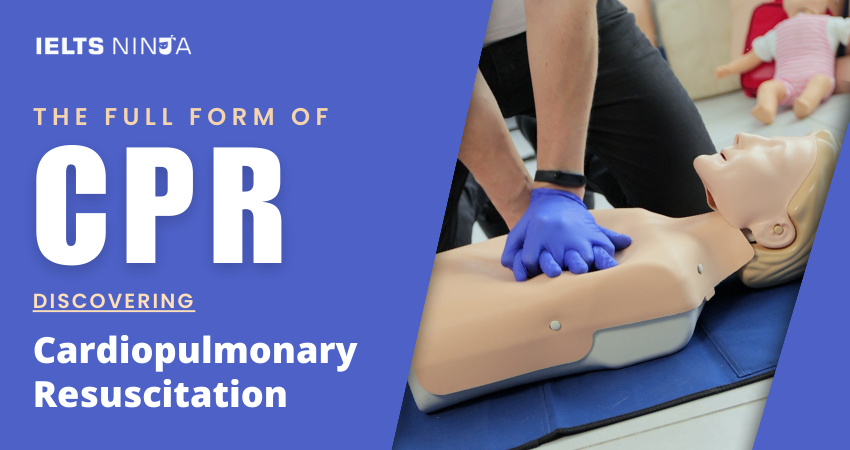In the realm of lifesaving techniques and emergency medical care, The full form of CPR that stands for Cardiopulmonary Resuscitation. CPR is a critical procedure performed in emergencies when someone’s heartbeat or breathing has stopped, such as in cases of cardiac arrest, drowning, or choking. It involves a series of chest compressions and rescue breaths to manually circulate blood and oxygen throughout the body. CPR is an essential skill that can significantly increase a person’s chances of survival in a life-threatening situation. In this comprehensive guide, we will explore the details of CPR, its techniques, and its importance in saving lives.
What is CPR?
Cardiopulmonary Resuscitation (CPR) is an emergency medical procedure that combines chest compressions and rescue breaths to maintain blood flow and oxygenation to vital organs when the heart and/or breathing have stopped. CPR is designed to buy time until professional medical help arrives or until the person’s natural heart rhythm and breathing can be restored.
Key Aspects of CPR
CPR involves several key aspects and techniques:
Recognition:
Recognizing the need for CPR is crucial. It should be performed when a person is unresponsive, not breathing, or breathing abnormally.
Chest Compressions:
CPR begins with chest compressions. The rescuer places the heel of one hand on the center of the victim’s chest and uses the other hand to push hard and fast, aiming for a depth of about 2 inches and a rate of 100-120 compressions per minute.
Rescue Breaths:
After a series of chest compressions, rescue breaths are given. The rescuer tilts the victim’s head back, lifts the chin, and gives two rescue breaths, ensuring the chest rises visibly.
Compression-Ventilation Ratio:
The standard ratio for CPR is 30 chest compressions to 2 rescue breaths. However, in some situations, hands-only CPR (chest compressions only) may be recommended.
Automated External Defibrillator (AED):
When available, an AED can be used to analyze the heart’s rhythm and, if necessary, deliver an electric shock to restore a normal heartbeat.
Also Read: Best online IELTS coaching & training academy
Importance of CPR
CPR is of utmost importance for several reasons:
- Immediate Response: CPR can be performed by bystanders until professional help arrives, improving the chances of survival for the victim.
- Maintaining Blood Flow: CPR helps maintain blood flow to the brain and other vital organs, preventing brain damage and increasing the likelihood of a successful recovery.
- Increases Survival: Early initiation of CPR can significantly increase the chances of survival for individuals experiencing cardiac arrest or other life-threatening situations.
- Accessible Skill: CPR training is widely available and can be learned by individuals of all ages and backgrounds.
- Community Health: Widespread knowledge of CPR in communities can create a safer environment and save lives.
CPR Training and Certification
CPR training courses are offered by various organizations, including the American Heart Association (AHA) and the Red Cross. These courses teach the techniques of CPR, including chest compressions, rescue breaths, and the use of AEDs. Many workplaces and schools also offer CPR certification to ensure that individuals are prepared to respond to emergencies.
Conclusion
Cardiopulmonary Resuscitation (CPR) is a crucial emergency medical procedure that can save lives when performed promptly and correctly. Learning CPR is a valuable skill that empowers individuals to respond effectively in life-threatening situations, providing vital support until professional medical help arrives. By promoting CPR awareness and training, communities can become safer and more resilient, increasing the chances of survival for those in need.








